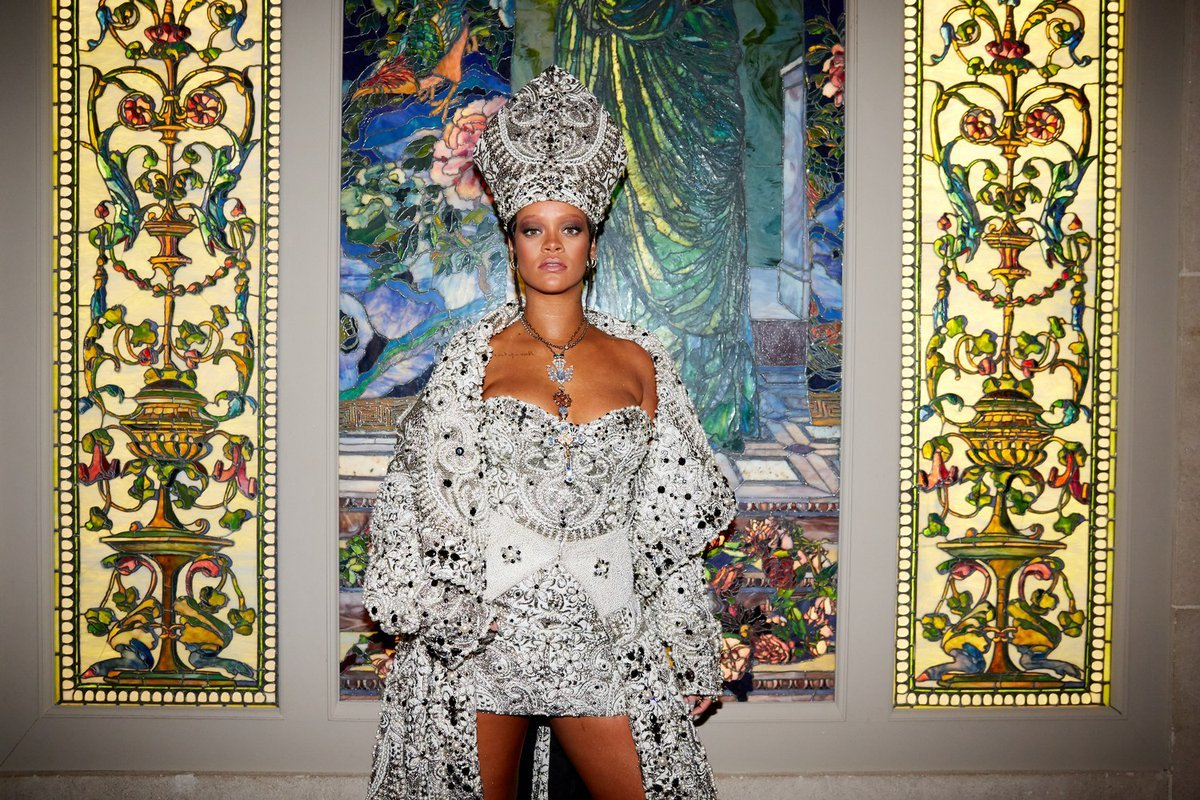
Art history, but make it fashion.
Is the Met better known for its art collection or for its luxurious annual gala? Yesterday our favorite (and not-so-favorite) celebrities appeared at the 2018 Met Gala for “Heavenly Bodies: Fashion and the Catholic Imagination.” The theme was one of the event’s most controversial yet, and a large number of people didn’t dress accordingly (why anybody would willingly not follow a Met Gala theme is beyond me) while others showed up in outfits featuring bedazzled crosses and halos. A few others went above and beyond to incorporate art into their outfits. Here are some of our favorite parallels to art history in this year’s Met Gala costumes.
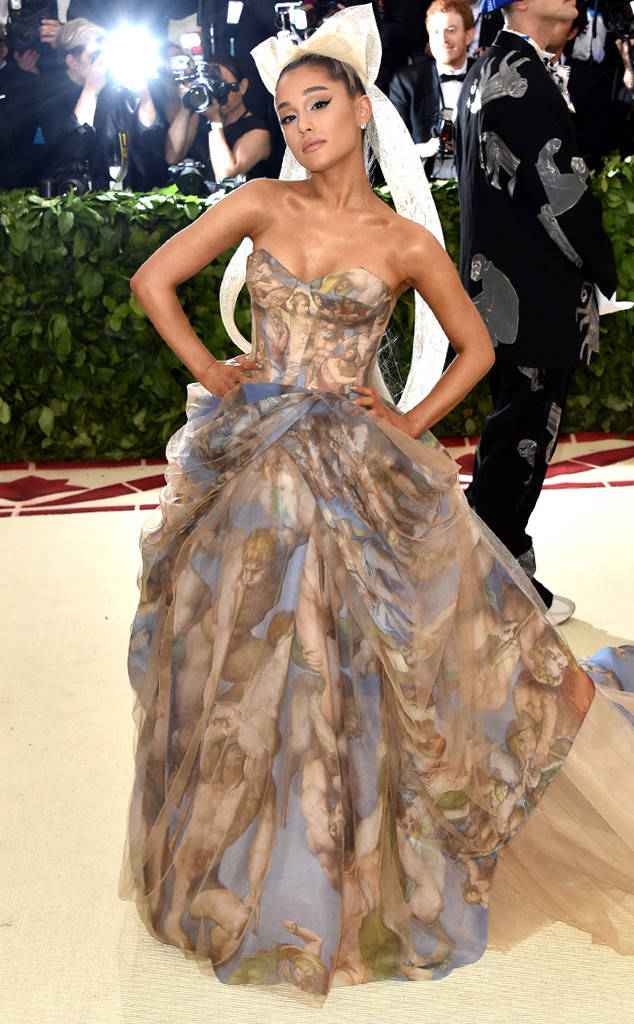
In the most obvious nod to art history, pop singer Ariana Grande displayed the “back wall of the Sistine Chapel” in her gown designed by Vera Wang.
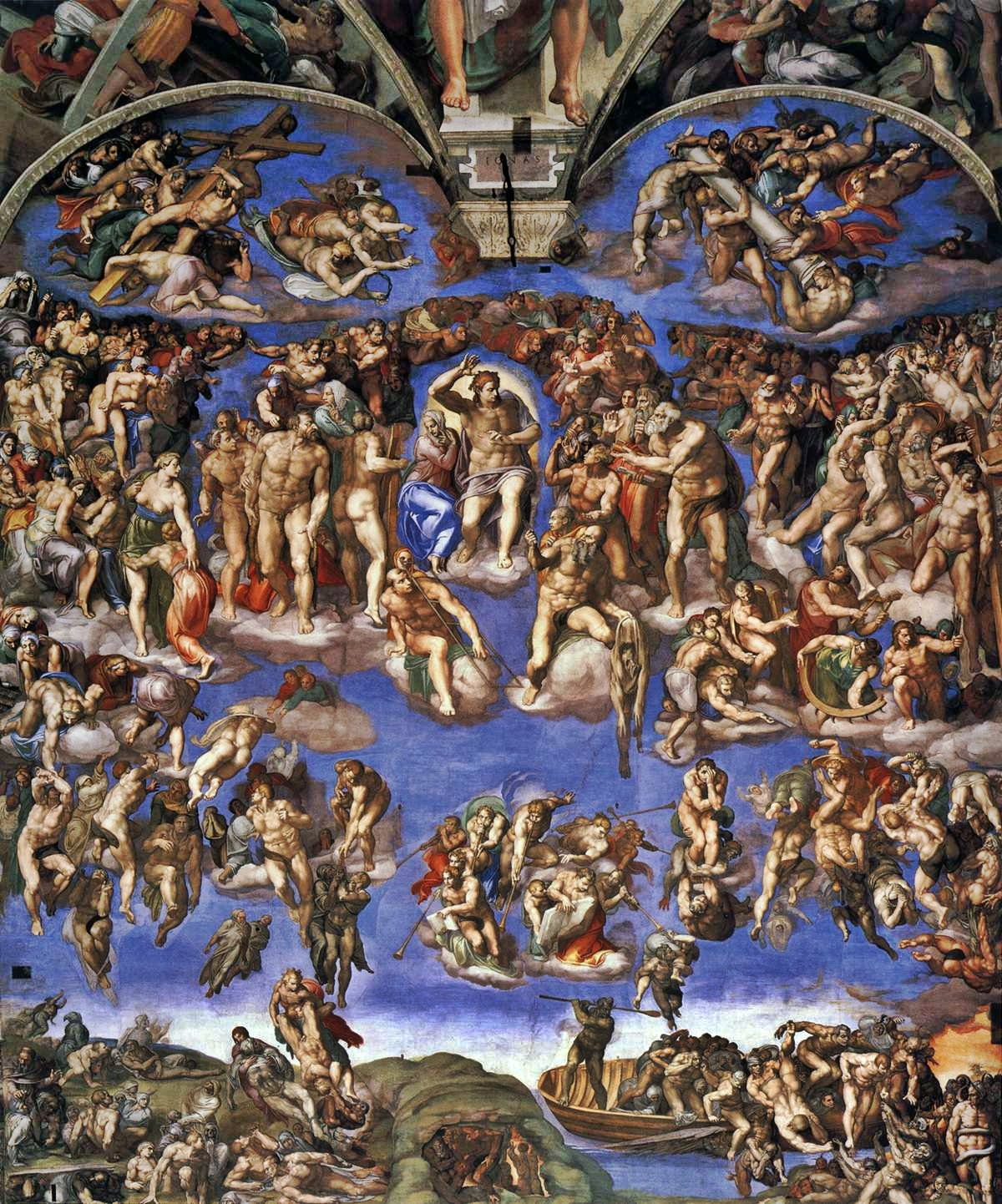
The Last Judgment, Michelangelo, 1536-1541
It doesn't get much more Roman Catholic than this! The painting that graces Ariana Grande's dress also graces the back wall of the Sistine Chapel, a building at the very heart of Roman Catholicism. The chapel is part of the apostolic palace, AKA the Pope's very own house, and is used for ceremonies such as the Papal Conclave, when a new pope is selected. Michelangelo completed this wall in 1541, some time after he finished the ceiling, and it depicts the final judgment of man in a tumultuous swirl of motion and rippling muscles. The placement of this scene on the East Wall rather than the West wall, where such scenes were typically painted to remind visitors of the coming judgment as they left, was an interesting choice; the only person who went in and out of the door on the East side in the right corner was the pope, which placed the pope's entrance directly inside Hell! (Did Michelangelo have some beef with the pope, or what?) And speaking of interesting placement, check out where Jesus is on Ariana Grande's dress! Not where you usually find Jesus, to say the least. (Though maybe one could say he is directly over her heart, which makes it a little better.)
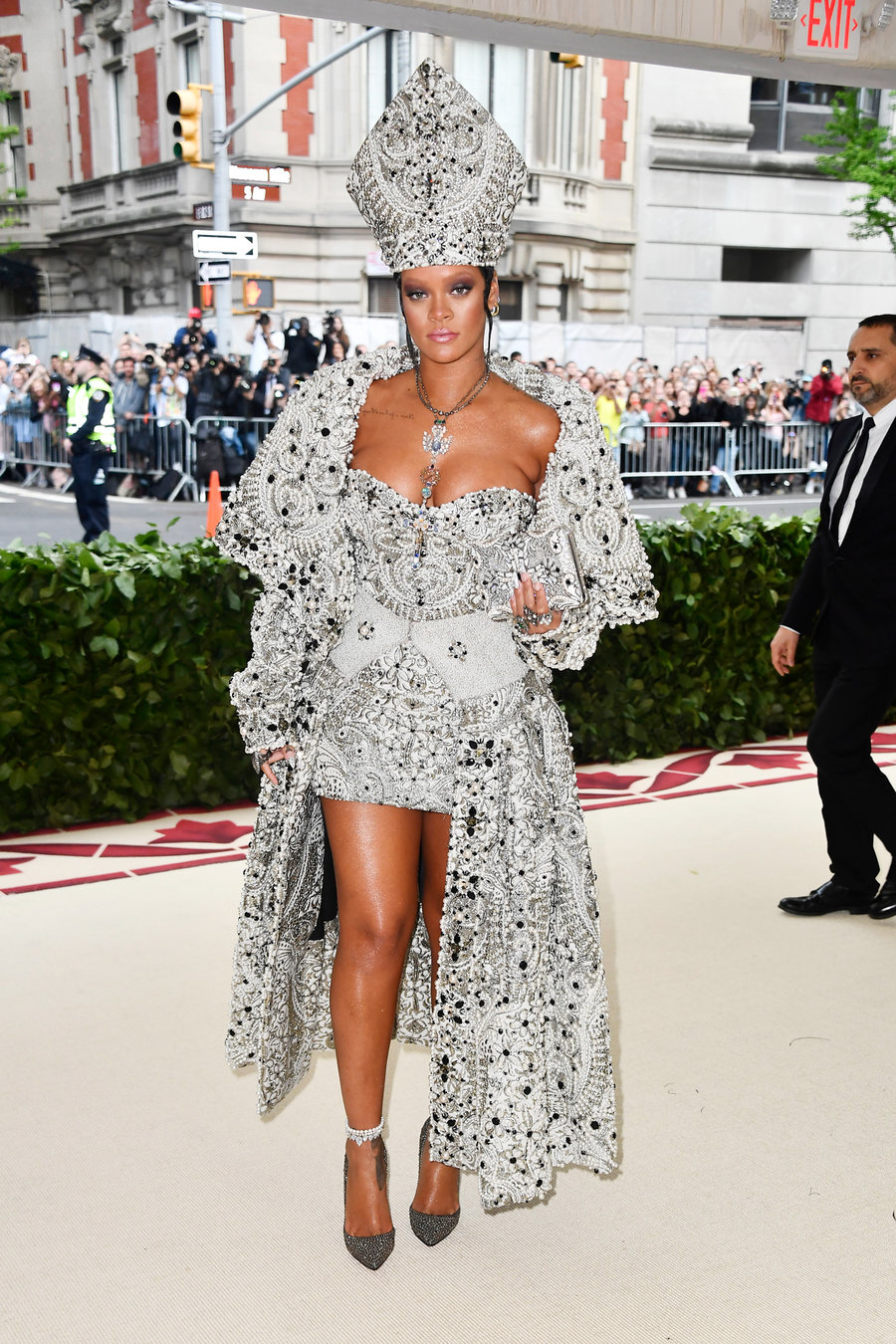
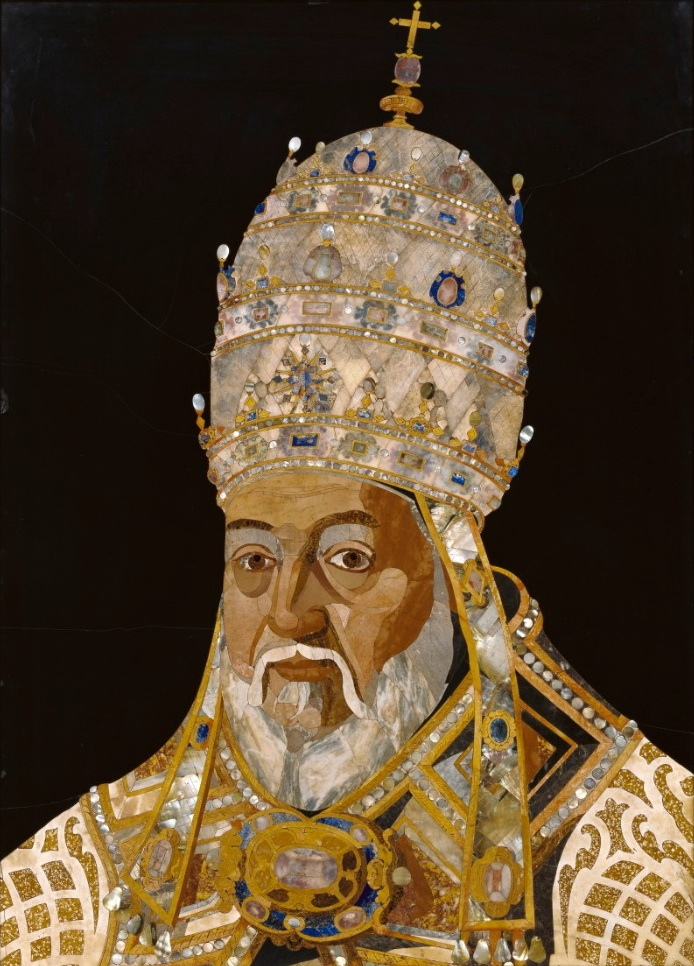
As always, Rihanna stole the show with her expensive pope get-up by John Galliano. Her papal tiara looks incredibly similar to one on this mosaic of Pope Clement VIII by Jacopo Ligozzi.
Rihanna's filet-shaped hat is a super-glam version of the Mitre, a type of papal hat worn since at least the tenth century after a long evolution from the Roman camelaucum. There are several kinds of mitre, each worn on designated occasions and differing from each other in level of ornamentation, from the heavily ornamented mitre pretiosa to the mitre simplex, the most plain. Rihanna's hat is a little more pretiosa than simplex. The only people officially allowed to wear mitres are Popes, cardinals, and bishops. Ri-Ri over here probably didn't get a special dispensation from the Pope to wear that headgear, but since she was one of the overseers of the entire Met Gala this year we'll let it slide.
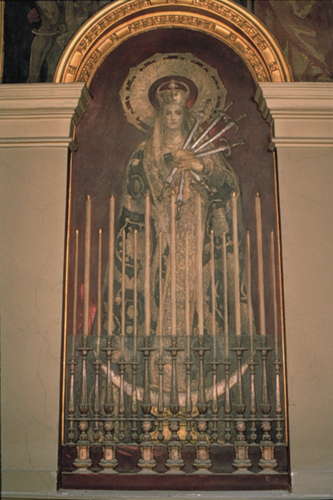
Triumph of Religion, John Singer Sargent, 1916
A number of the outfits were heavily inspired by a popular type of Marian imagery called “Our Lady of Sorrows,” which is a religious devotion including specific prayers and meditations relating to seven episodes from the Virgin's life that caused her great sorrow. The standard depiction of Our Lady of Sorrows includes a golden halo or crown, prominent tears, and seven swords piercing her heart.
 Lana del Ray in Gucci
Lana del Ray in Gucci
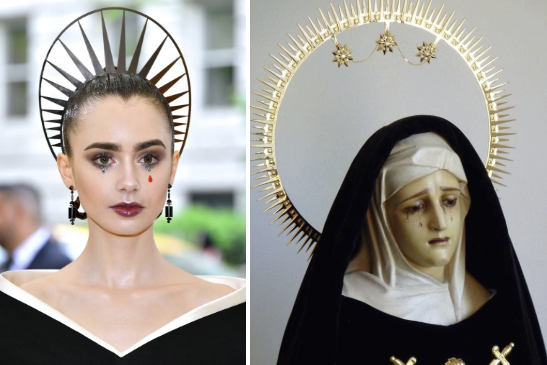
Lily Collins in Givenchy Haute Couture
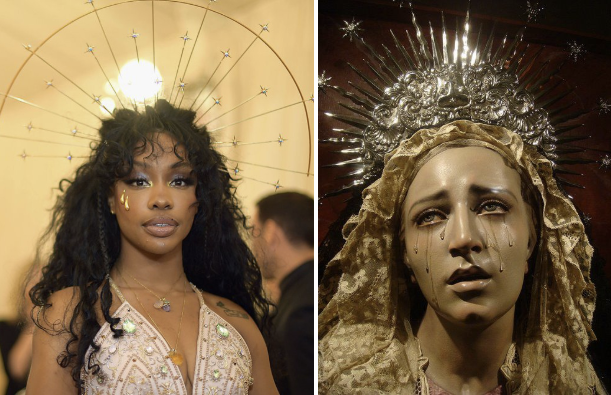
SZA in Versace
(we know who really inspired the resurgence of the halo crown though)
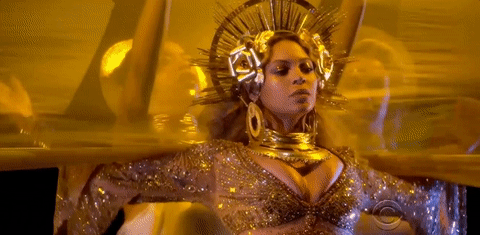
Halo crowns weren’t the only type of headwear at the Met Gala, but they certainly did make a splash. The halo, depicted as a disc or small circular nimbus, was used in Classical Rome in the depiction of certain gods and emperors, and while early Christians tried to resist incorporating the halo into their imagery because of its Pagan origins, the Halo was too powerful an attribute to make disappear. I mean, what else could be so effective at representing holiness than this symbolic use of light? By the sixth century CE, the halo was standard in depictions of all the most important saints and angels, and even Jesus. While Michelangelo eschewed halos for his more earthly looking saints, the halo made a big comeback during the Counter Reformation, during which time the Church was using art to reinforce its own majesty and glory.
Consider these art-inspired headpieces for your next music festival outfit.
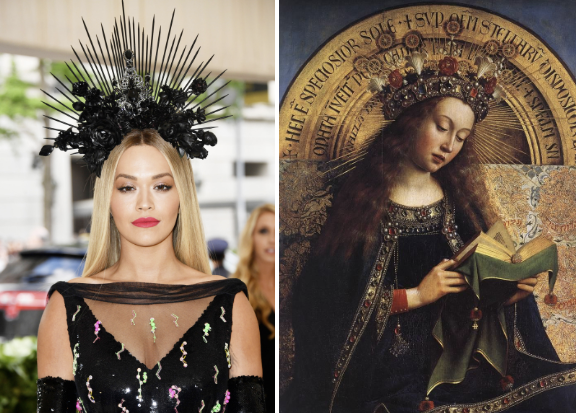
Rita Ora in Prada and Lorraine Schwartz
Ghent Altarpiece, Jan Van Eyck, 1432
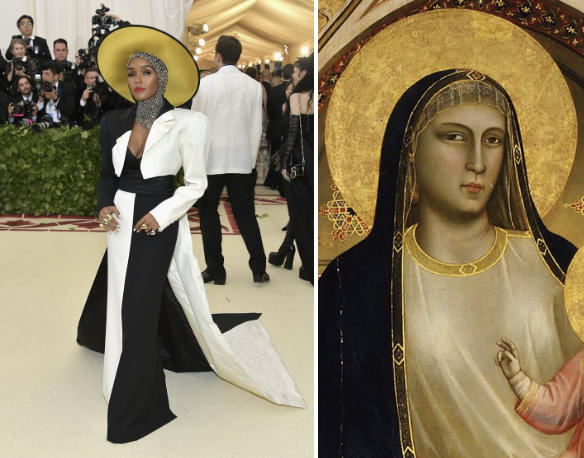
Janelle Monae in Jennifer Fisher
Madonna Enthroned, Giotto, 1306
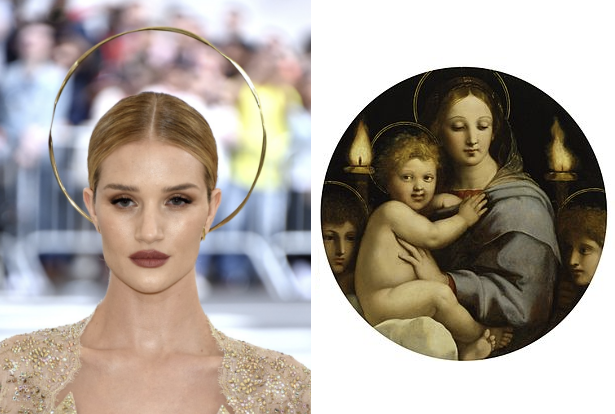
Rosie Huntington-Whiteley in Ralph Lauren and Anita Ko
Madonna of the Candelabra, Raphael, 1513
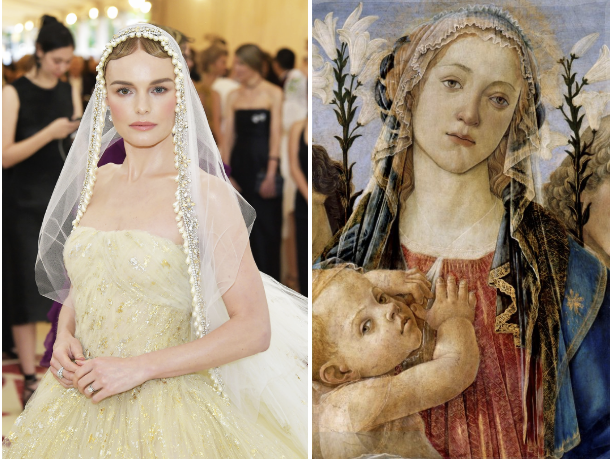
Kate Bosworth in Oscar de la Renta and Tacori
Mary with the Child and Singing Angels, Sandro Botticelli, 1477
With her golden hair parted chastely down the center of her head and covered with a transparent, fringed veil, Bosworth looks the very image of a Botticelli Madonna. While Mary is typically shown in a blue mantle over a red garment, Botticelli also liked to show off his skills by painting transparent silk. Her head covering is representative of her virginity, which according to Catholic dogma, she retained her entire life, despite her marriage to Joseph. The virginity question aside, Kate Bosworth shares the Madonna's beauty and regal bearing.
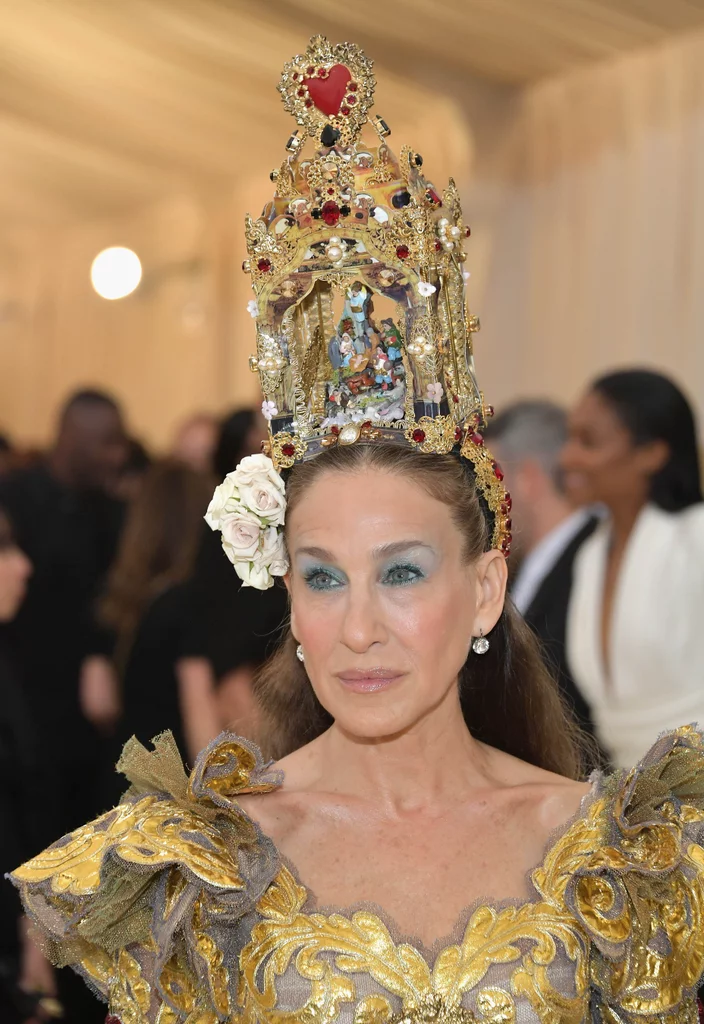
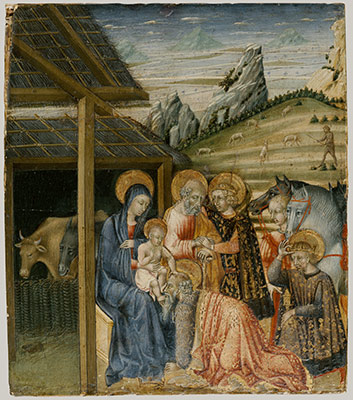
Sarah Jessica Parker in Dolce & Gabbana and Jennifer Fisher
The Adoration of the Magi, Giovanni di Paolo, 1460
Sarah Jessica Parker seems to live by the motto “Go Big or Go Home.” The ornate quality of her headdress is reminiscent of many late gothic reliquaries, which were often covered in gilding, encrusted with jewels, and decorated with little figures, including Nativity scenes. The red heart that tops her church of a hat may also be a reference to the Sacred Heart, a common symbol in Catholic devotion that refers to Christ’s divine love of mankind as the reason for his sacrifice.
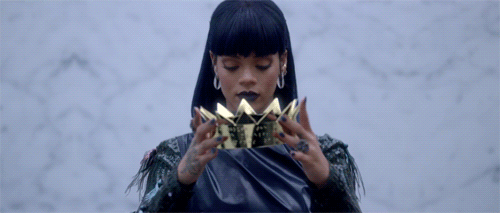
If crowns aren’t your thing, don’t worry- the Met Gala’s got you (mostly) covered when it comes to clothes. These outfits were not only dazzling but also took inspiration from major period artists! What more could you want?
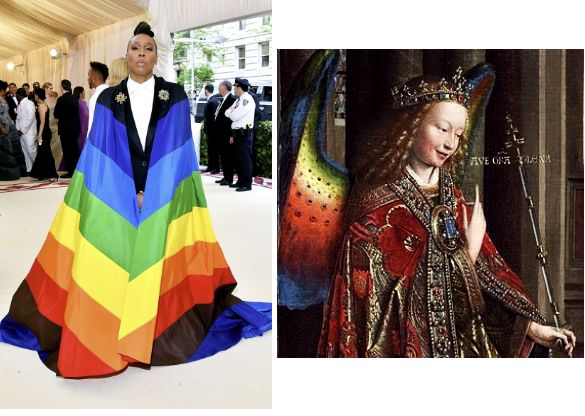
Lena Waithe in Carolina Herrera
The Annunciation, Jan Van Eyck, 1436
The rainbow is a powerful symbol in Christian art, denoting God's promise to never again wipe out all of humankind in a devastating flood. The insanely gorgeous rainbow wings Van Eyck gives the Angel Gabriel in this Annunciation scene may refer to that promise of old while also enforcing the idea of a new covenant God would create with man in the birth, death, and resurrection of His son. Since then, the rainbow flag has been adopted as a symbol of Gay Pride, reflecting the diversity of the LGBTQ community. And who said you can’t have pride and be religious at the same time? Certainly not the Bible.
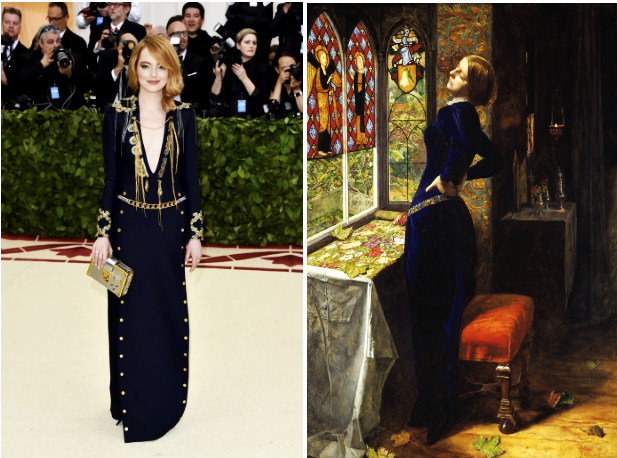
Emma Stone in Louis Vuitton
Mariana, John Everett Millais, 1851, Tate Britain
Millais isn’t exactly Catholic art, but the stained glass windows in his painting sure are. The painting depicts Mariana from Shakespeare's "Measure for Measure," a play that takes place in Catholic Italy and grapples with Roman Catholic themes such as chastity, piety, corruption, lust, hypocrisy, and repentance. Mariana waited patiently and chastely for her ex-fiance Angelo after he dumped her when she lost her dowry in a shipwreck, only to take part in a crazy bed-swapping trick to lure Angelo into marrying her. Whether or not Mariana is a good Catholic role model is debatable, but that dress is clearly inspired.
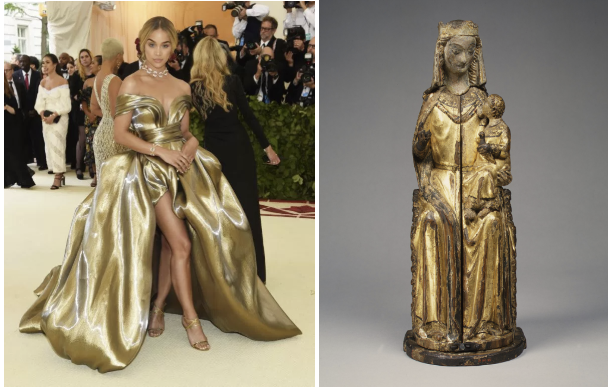
Jasmine Sanders in H&M
Shrine of the Virgin, anonymous, 1300, Metropolitan Museum of Art
If this dress wasn’t inspired by this piece, there’s still an uncanny resemblance between the two--the slit in the dress is in the exact same spot as the opening for the shrine. The volume of the dress and its golden color also reflect the Marian imagery found on many shrines, including this one from Medieval Germany that was gilded on wood and opens to reveal a mystical image of the Trinity. What mystical treasures this dress conceals are for Jasmine to hide or reveal as she pleases.
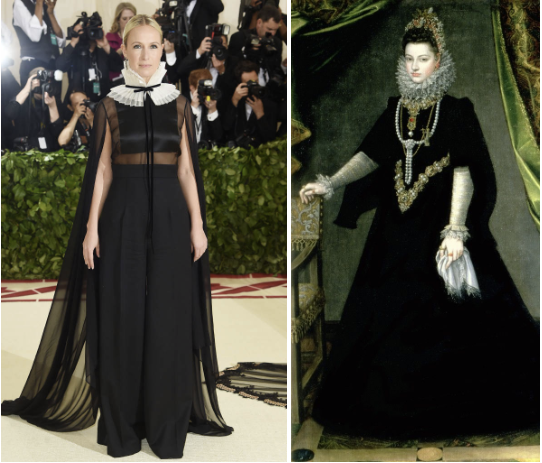
Misha Nonoo
Infanta Isabella Clara Eugenia, Sofonisba Anguissola, 1599
We can only hope this dress isn’t as uncomfortable as it looks--for both of them. You have to give her credit for going the Renaissance Noble route, celebrating the fancy Patrons who would have commissioned all the fabulous art. Sofonisba Anguissola was a rare female artist who actually worked at the Spanish Court in the reign of Philip II, during Catholic Spain's fight for dominion over the Low Countries. Anguissola was able to render her royal sitters and their fabulous clothing and jewelry delicately and soberly. Misha Nonoo, denizen of the London Fashion world and matchmaker to Prince Harry and Megan Markle, takes that classic little-black-number-and-white-ruff Spanish court look, and gives it a contemporary, more subtle edge. The Infanta Isabella Clara Eugenia probably wouldn't have been able to get away with a sheer midriff, but it's a perfect update for 2018.
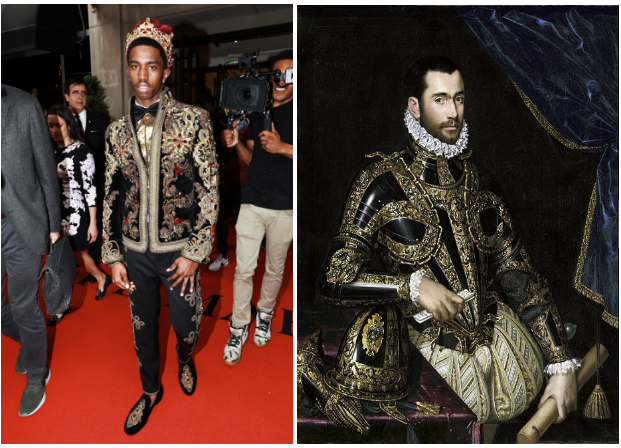
Christian Combs in Dolce & Gabbana
Portrait of Jacob Boncompagni, Scipione Pulzone, 1574
If you’re ever wondering what P. Diddy is up to these days, he’s apparently taking his son to the Met Gala. Young Christian "King" Combs is no stranger to the catwalk, and he can pull off pretty much anything. That gold embroidery on black, studded jewels, and velvet crown hearken to the most fancy armor seen in 16th century portraits, making Combs look positively kingly. Such armor, while great for getting your picture painted in, would have been far too costly to wear out and about or, God forbid, in combat. "This is just my fancy dress armor," Jacob Boncompagni would have said. "I only bust it out for things like the Met Gala."
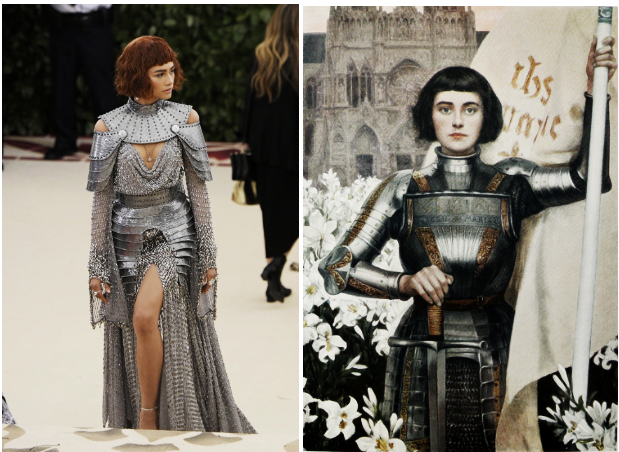
Zendaya in Atelier Versace and Tiffany & Co. jewelry
Jeanne d’Arc, Albert Lynch, 1903
Roman Catholic attire can't be summed up by silly hats, robes, and jewels alone. There's also a little something called "crusader chic," and it is full-on medieval. While Joan of Arc was no crusader, she is now one of nine secondary patron saints of France due to the prominent role she played in the Hundred Years' War. When just a girl, the peasant Joan received visions of various saints telling her to support Charles VII and help free France from English rule. She attended the military campaigns wearing protective armor, but after several French victories, she was captured by a Burgundian faction working for the English and burned at the stake. Now canonized by the Roman Catholic Church as a martyred saint, Joan of Arc continues to inspire, as can be seen in Zendaya's surprisingly sultry, but very heavy-looking chain mail outfit. Somebody just give her a sword already!
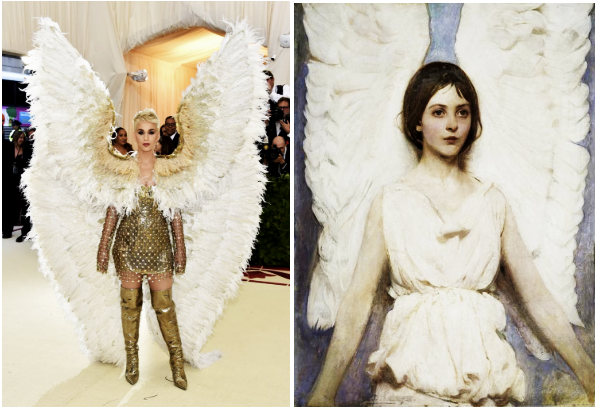
Katy Perry in Versace
Angel, Abbott Handerson Thayer, 1887, Smithsonian American Art Museum
Katy Perry looks ready to take flight any minute now. And that's because she did the right thing and went all out for her gala outfit! Despite the fact that the word "angel" comes from the Greek word for Messenger, and there is no standard description of their appearance in the Bible, Thayer's painting largely sums up the popular conception of angels: virginal, dressed in flowing white robes, and with wings, of course! There's no halo here, however, and that may be because the model for this was actually Thayer's own 11-year-old daughter, and he was trying to depict her as the personification of spiritual beauty, not specifically an angel, despite the painting's title. Thayer himself thought art was "a no-man’s land of immortal beauty where every step leads to God." And that's pretty much the same plane where traditional Roman Catholicism places Angels, majestic beings close to God.
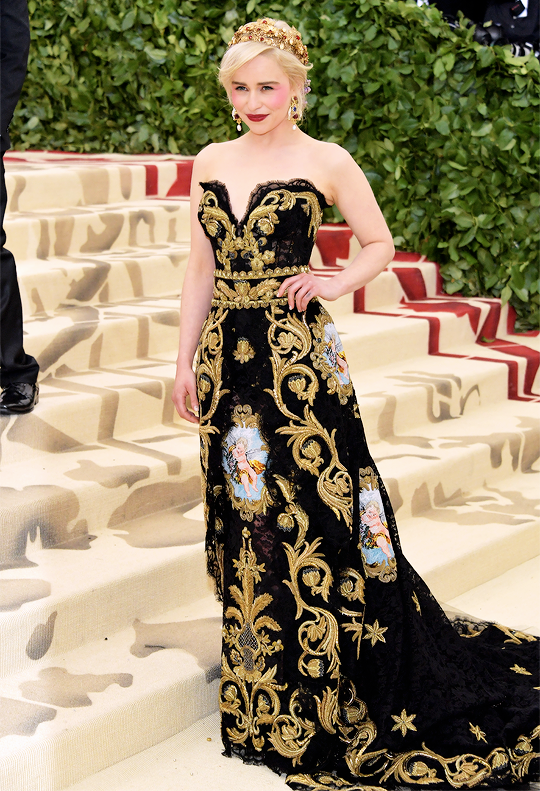
Emilia Clarke in Dolce & Gabbana Alta Moda
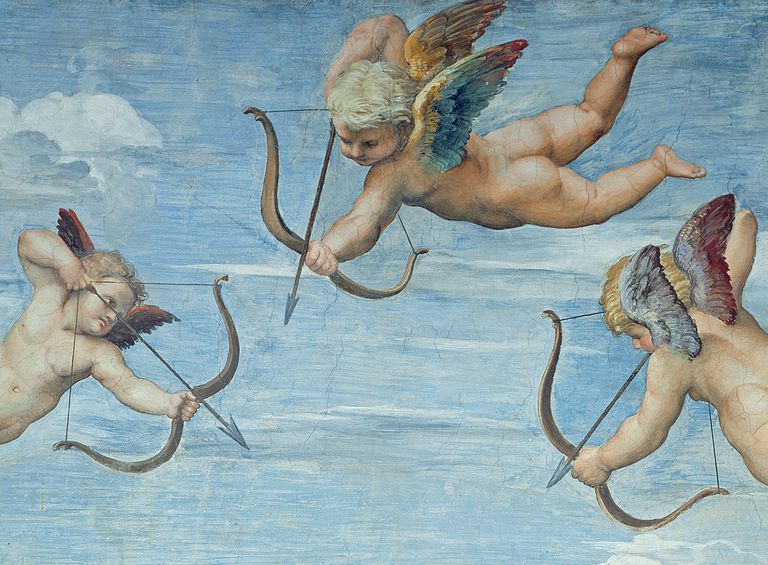
The Triumph of Galatea (detail), Raphael, 1514
The Mother of Dragons always slays, no matter what she's wearing. With its elaborate, curvilinear gold embroidery and frolicking putti, this dress looks like it came straight out of the Rococo. While Putti were originally found on Classical Pagan sarcophagi, the motif was revived during the Renaissance in Italy, where it was utilized in paintings of classical myth, and was adopted into Christian Iconography. What was once a little cupid underwent a conversion experience into an angel (along the lines of a cherub). In the Rococo, Putti also became symbols of leisure and playfulness, which is why Putti often scream of wealth and excess. Dolce and Gabana clearly know that, like leopard print, putti are most tasteful in small doses.
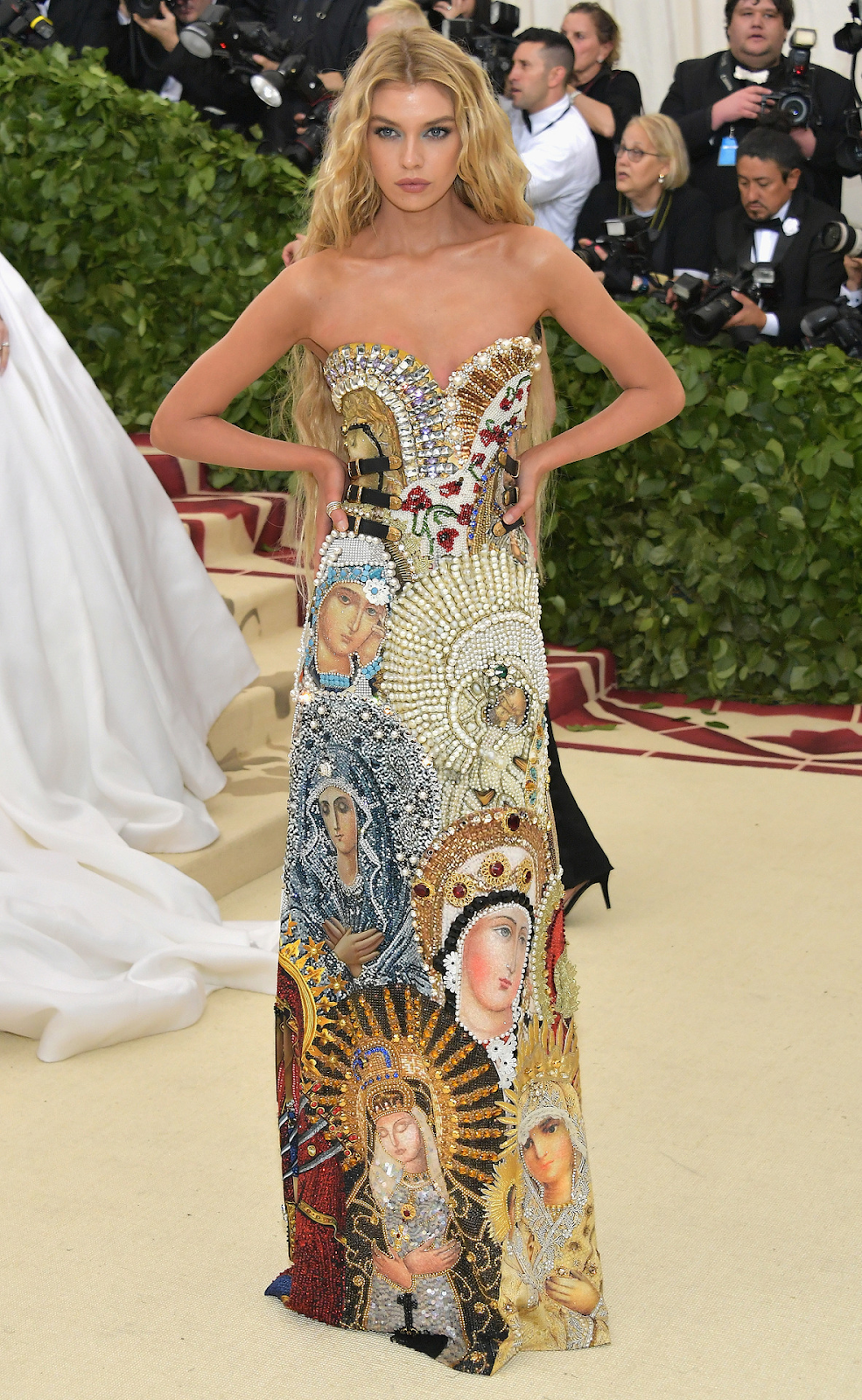
Stella Maxwell in Moschino and David Yurman
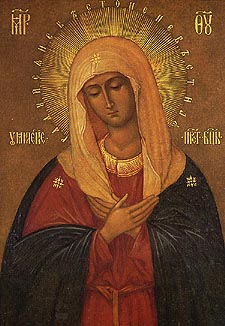
“Tenderness” icon of the Mother of God, 1521
Wow. Where do we even begin talking about this beautiful dress? This mosaic-styled gown features various images of Mary that you’ll only be able to find in churches and on prayer candles. Indeed most, but not all, appear to be inspired by Byzantine icons of the Madonna. While most strongly associated with the Eastern Orthodox Christian tradition, such radiant and opulent images could be found in pre-Renaissance (and therefore Catholic) art in Western Europe as well. Images like this were meant to be venerated as conduits to saint Mary herself, who could then intercede for you. "Our Lady of Tenderness" is one such icon that was depicted, either with the Christ child in her arms, or with her hands over her chest in that heart-felt position.
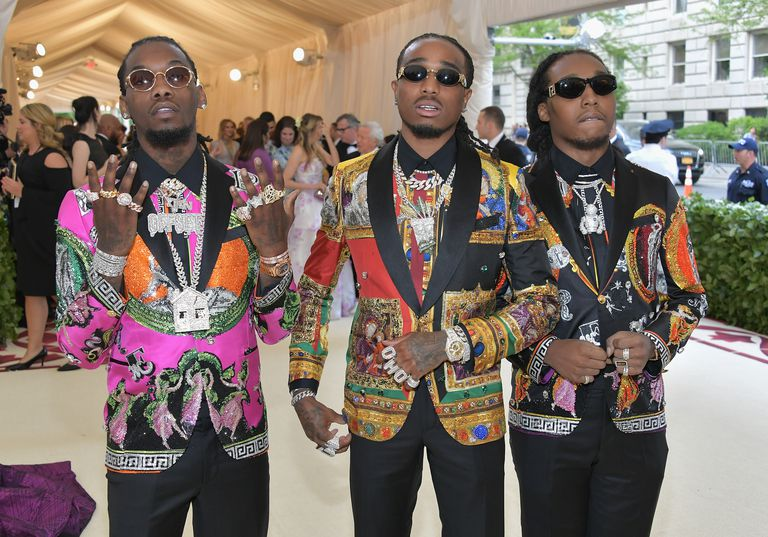
Migos in Versace
There’s too many references in these matching sequin outfits to count! One jacket is covered in solely Christian images while the other two primarily feature classical Greek and Roman artworks. We were able to spot the Venus de Milo, The Victorious Youth, and several variations of Madonna and Child currently exhibited by the Met (shown below).
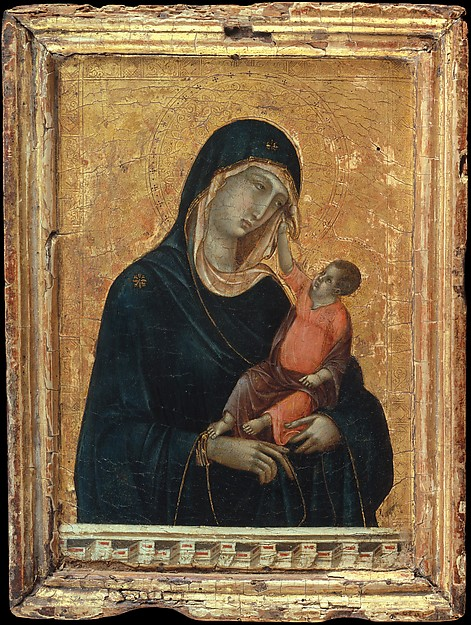
Madonna and Child, Duccio di Buoninsegna, 1290
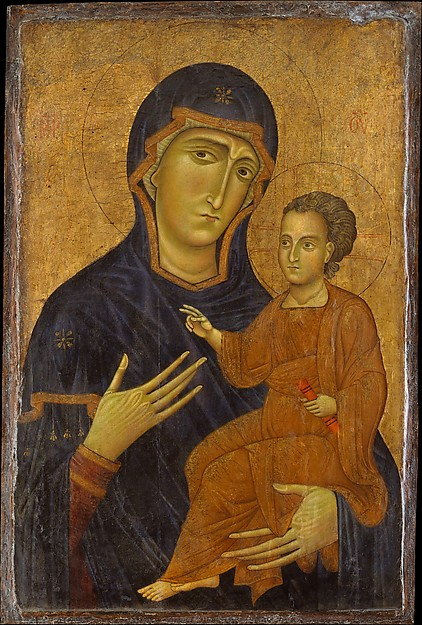
Madonna and Child, Berlinghiero, 1230
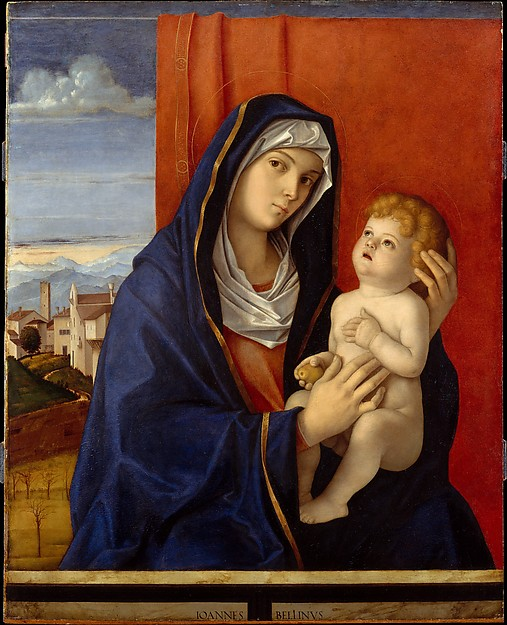
Madonna and Child, Giovanni Bellini, 1480

Salma Hayek in custom Altuzarra
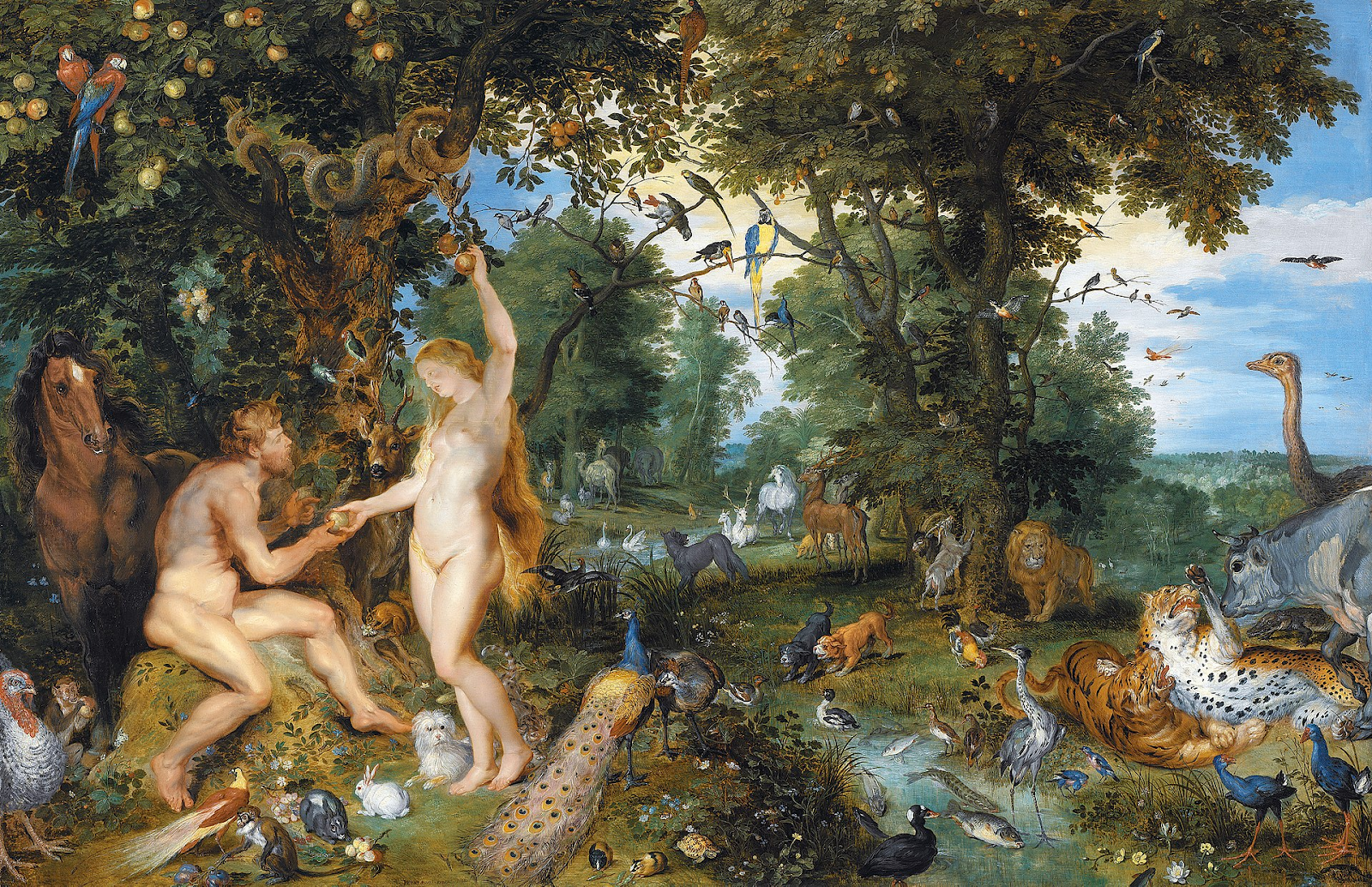
Garden of Eden with the Fall of Man, Peter Paul Rubens and Jan Brueghel the Elder, 1617, Mauritshuis
The branch of parrots and white horse trotting in the background scream this classic Brueghel/Rubens collab, even if Adam and Eve are nowhere in sight. The Garden of Eden and the Fall of Man that took place therein are central to Roman Catholic dogma, so this makes a fabulous choice of subject for the evening. Jan Brueghel the Elder and Rubens were both Catholic and their artwork shows the influence of the Counter-Reformation, during which the celebration and cataloging of natural phenomena (such as flora and fauna) was used as a way to understand the divine revelation of God. Nature was how God revealed himself to man, so observing it carefully was good for one's spiritual health. But don't forget, this is the 17th century. Don't get too scientific now--stay outta here with your gravity and Capernican Heliocentrism. You can keep that nice, zoological dress, though.
With so many options for themes, ranging from Roman Catholic dogma, to Bible stories, to priestly vestments, to works in museums and churches, and the patrons who commissioned them, this sure has been a fruitful year for fashion creations. Kudos to all those designers out there getting really funky with it, sacrilege be damned.
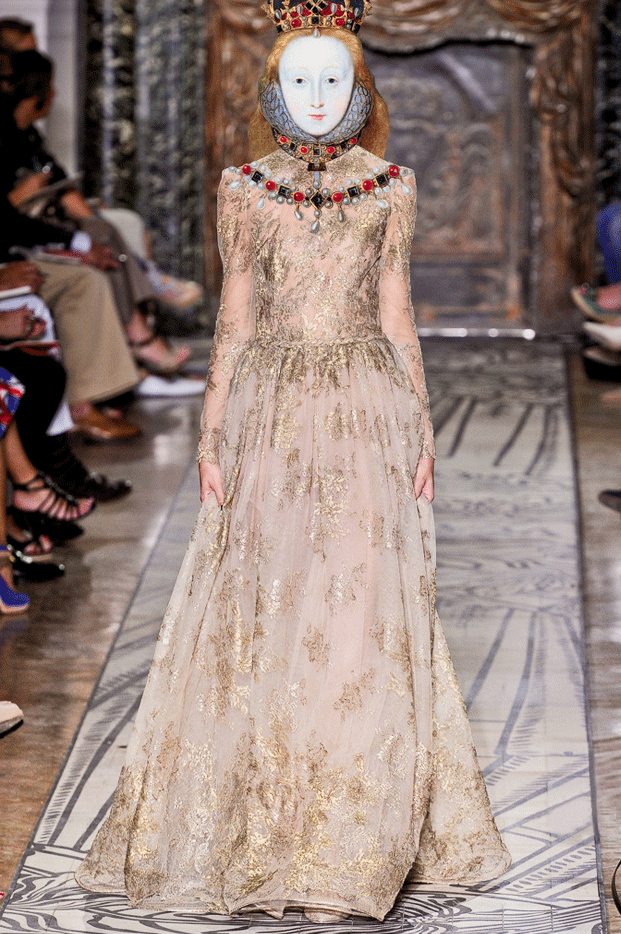
Today’s lesson: if you’re heading to a museum to look at art, the best outfit to wear is art itself. Let us know what your favorite Met Gala looks were this year!
By Alannah Clark and Jeannette Sturman









Surya Grahan Tips For Pregnant Women